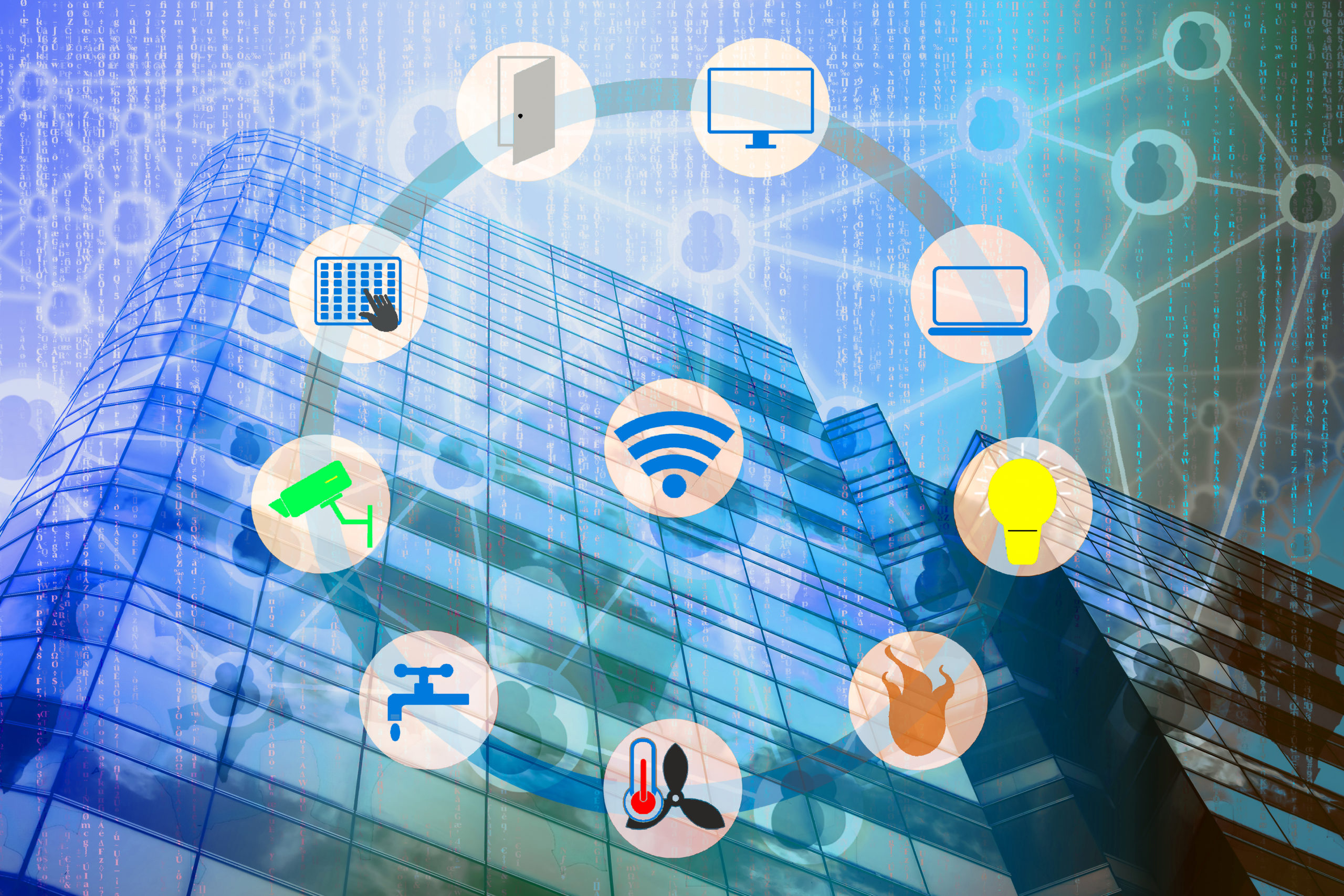
Smart Buildings and IoT: Supporting a safe return to the office
Quocirca’s Smart Buildings and IoT Study analyses how IoT-enabled smart buildings are presenting new opportunities for managed service providers (MSPs) in the post-pandemic workplace.
As more businesses firm up plans for employees to go back to the office, they are considering how to ensure their operations run efficiently, securely and sustainably, while supporting staff wellbeing. Smart buildings powered by cloud connected IoT devices and sensors could provide the answer. This is opening up interesting new opportunities for MSPs, including Managed Print Service (MPS) providers.
Re-engaging the workforce
To reconnect and re-engage the workforce, organisations must adopt more agile and flexible working practices to meet employees’ changing expectations around hybrid working. This has been precipitated by four key factors:
- The need to allow for social distancing and avoid overcrowding
- The realisation that working productively from home is possible
- Greater awareness of the environmental impact of commuting
- Increased emphasis on work-life balance and its impact on mental health
Although remote working will persist, many employees are ready to return to their desks and interact with colleagues in an office environment that fosters collaboration, communication and creativity. However, employees need assurance that they can return to the office safely and may be more motivated to return to a workplace that is optimised for their health and wellbeing.
This consideration dovetails with the increased focus on environmental, social and governance (ESG) reporting, driven by impending deadlines to meet sustainability targets that were set in alignment with the UN’s Sustainable Development Goals (SDGs). Its estimated that buildings and their construction together account for 36 percent of global energy use and 39 percent of energy-related carbon dioxide emissions annually, according to the United Nations Environment Program
Smart workplaces to support new ways of working
As organisations consider how to make their working environments safe, secure and efficient, both for employees working onsite and remotely, smart technology is providing possible answers. Smart building IoT sensor-based solutions and real-time data analysis are enabling businesses to improve workplace efficiencies and minimise health risks.
For example, according to Siemens, keeping humidity between 40-60% can reduce the transmissibility of cold and flu viruses by up to 70%. This can be managed by monitored air conditioning, which adjusts the internal atmosphere automatically for comfort and safety.
Smart technology can also facilitate temperature readings, notifications of space availability and touchless access – all ideal to support a safe return to work.
Meanwhile, it can improve the efficiency of a building, both optimising the use of space and reducing energy usage, for example by switching off lights and heating in empty areas. It also makes it possible to monitor equipment remotely, including air conditioning, security cameras and printers, flagging up when maintenance is needed or when there is a security breach.
How organisations are embracing smart building technology
Quocirca’s Smart Buildings and IoT Study takes an in-depth look at how the IoT is enabling businesses to adapt their workplaces both to comply with Covid protocols and meet sustainability targets, while also controlling costs. It also explores the range of opportunities this presents for MSPs.
The report is based on a survey of 260 IT decision makers from companies in the UK, France, Germany and the US with 500 or more employees. Carried out in May 2021, the study provides a snapshot of attitudes to smart building technology at the crucial moment when organisations are deciding how best to support new ways of working prompted by the pandemic.
The key findings include:
- The top reasons for investing in smart building technology are cutting long-term costs (57%), reducing risk (51%) and improving health and safety (48%).
- Investment in IoT is increasing, with 76% of companies investing more than last year. Companies with 500-999 employees are more than twice as likely to have significantly upped their IoT spend compared to larger businesses.
- Of the organisations that have already invested in IoT technology, the top areas for spending are smart heating and cooling (44%), smart lighting (42%) and touchless access (36%).
- The majority of respondents consider print to be part of their IoT environment (81%) and are keen to be able to track both usage and sustainability metrics.
- Security was a key driver of IoT adoption for 30% of respondents, but data security in particular was a major area of concern for 53%.
- Companies are looking to IoT technology to help them maintain a comfortable, safe and energy-efficient environment. More than half of the respondents rated analytics around internal atmosphere (air quality, temperature and humidity) and process efficiency as very valuable.
What are the implications for MSPs?
Quocirca sees the shift towards IoT-enabled smart buildings as an opportunity for MSPs to diversify. This can be achieved by forging new strategic partnerships and extending workplace solutions offerings to encompass a full range of managed IoT services.
These might include:
- health and safety control and compliance (e.g. temperature screening, indoor air quality, access control, touchless technology)
- sustainability services (e.g. monitoring and analysing energy data to optimise energy savings)
- comfort monitoring (e.g. temperature, humidity, CO2, brightness and noise levels)
- smart workplace productivity solutions (e.g. space monitoring and management)
As organisations embrace the power of real-time data to boost their operations in a huge range of areas, the managed IoT services market is likely to boom. MSPs are well placed to make the move into smart building technology, being accustomed to supplying hardware and carrying out remote monitoring to provide services such as predictive maintenance and environmental performance analysis.
The fact that such a high proportion of respondents in the study consider print to be part of their IoT environment suggests that customers might be receptive to their MPS provider offering a broader range of IoT services.
To find out more about the potential for managed print service providers to diversify into the IoT services market, read Quocirca’s report, ‘Smart Buildings and IoT Opportunities in the smart connected workplace’ an check out the infographic.
You have Successfully Subscribed!
Stay ahead with industry insights
Receive Quocirca’s latest articles and research updates




